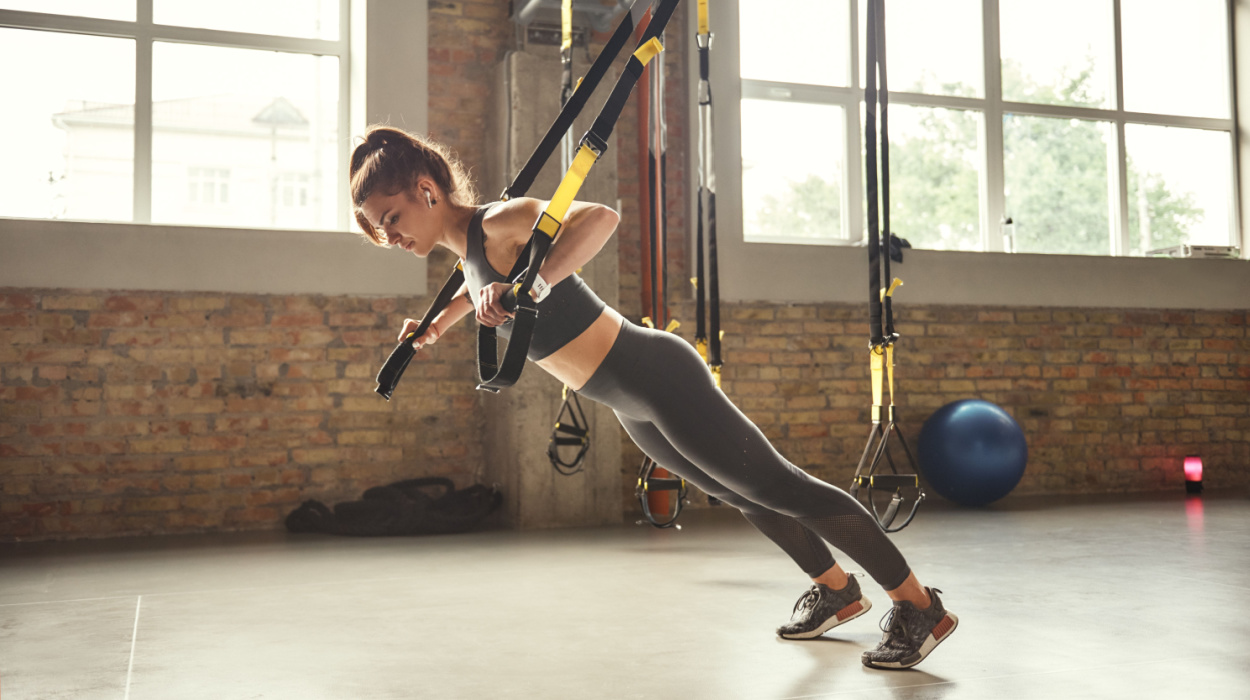Your arms are one of the several areas of your body that store excess fat. Flabby arms can make you feel self-conscious and unattractive. Like many people, you may be ready to get into gym mode and shed some pounds.
Burning fat on your arms will require you to do exercises that will help burn overall body fat. Then, you can add exercises that will help tone and sculpt your arm muscles. While exercise is great, there are additional tips to help you lose arm fat and get skinnier arms.
In this article, we will discuss how to lose arm fat without gaining muscle holistically and effectively.
Effective Exercises On How To Burn Arm Fat Without Gaining Muscle
It is possible to lose arm fat without bulking up. The following are exercises to get lean, toned arms:
- Bicep Curls.
- Tricep Kickbacks.
- Tricep Dips.
- Lateral Raises.
- Push-ups.
- Decline Push-ups.
- Planks.
- Inchworms.
How To Lose Arm Fat Without Gaining Muscle
Wondering how to get lean arms, not bulky ones? We have provided eight exercises that you can do to tone your arms without building muscles.
Bicep Curls
Bicep curls are a great exercise to help tone your arms without significant muscle gain. It primarily targets the biceps brachii muscle, which is located on the front of your upper arm. Incorporating bicep curls into your routine includes improved arm strength and endurance, increased calorie burn, and enhanced metabolism.
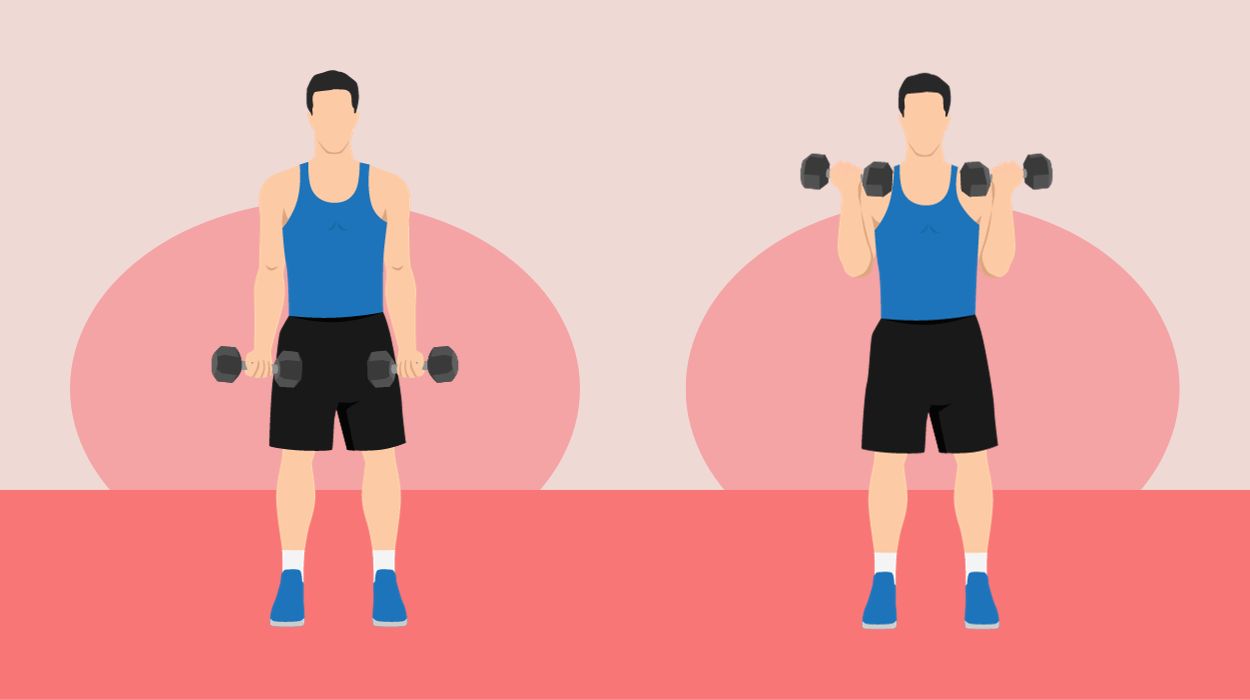
How to do:
- Grab the weights in each hand and let your arms hang by your sides. Your elbows should be straight by your side and your palms facing in.
- Raise one arm slowly, rotating it as you lift. Your forearms start facing your hip and should turn upward toward your body as you lift until they meet your biceps. Your palm should be facing your shoulders now.
- Lower the same hand to its original position. Repeat the bicep curl on the other hand.
Tips:
- Choose very light weights that you can lift comfortably for higher repetitions. This strategy promotes toning and endurance over muscle growth.
- Keep your back straight, shoulders relaxed, and elbows close to your body to minimize the risk of injury.
- Focus on a slow, controlled tempo during your bicep curls to maximize the time under tension on your muscles.
Optimal Sets and Reps: three sets of 15-20 reps.
Tricep Kickbacks
Tricep kickbacks are a fantastic exercise to target the triceps and tone the back of your arms, helping you promote a leaner look.
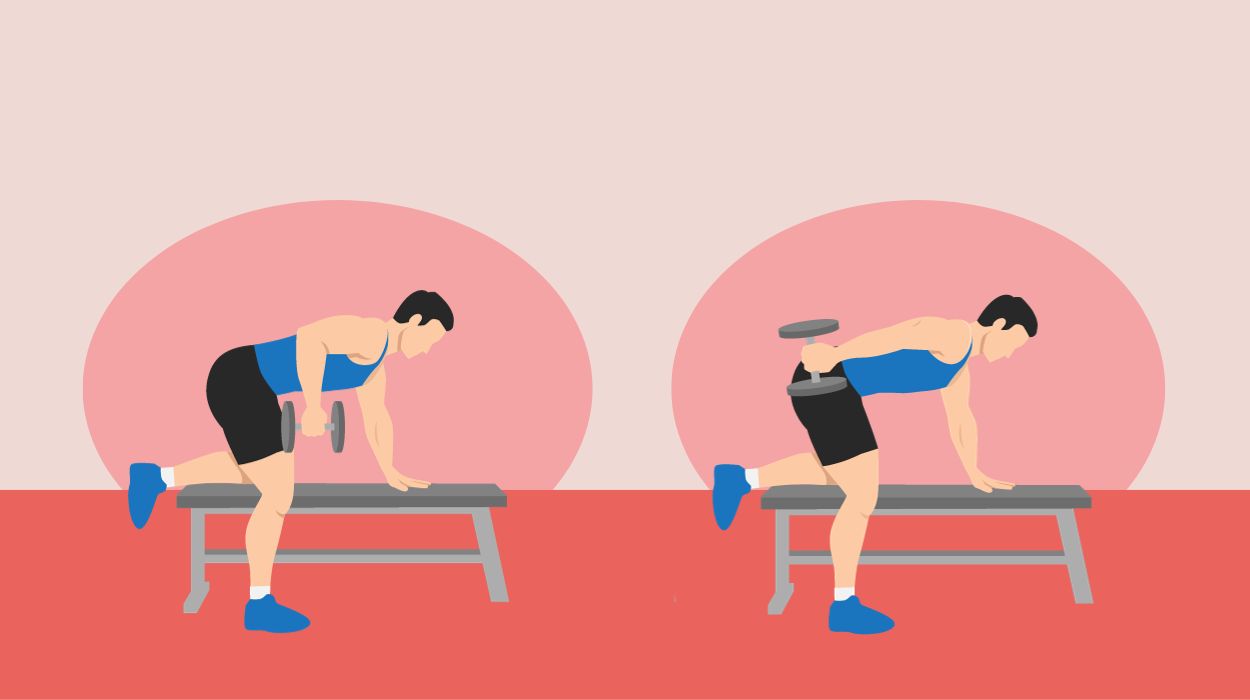
How to do:
- Grab your weights in each hand.
- Stand with your feet shoulder-width apart with your arms by your side, palms facing in.
- Keeping your spine straight, bend forward at the waist until you are almost parallel to the floor.
- Your arms should remain by your sides but be aligned with your bent form so that they are also parallel to the floor.
- With your upper arms by your side, bend your elbows with the weights until they are at right angles to the floor.
- Next, extend them backward to your starting position and bend your forearms again.
Tips:
- Opt for very light weights that you can comfortably lift for higher repetitions to promote endurance and definition over bulk.
- Keep your back straight, hinge at your hips, and ensure you fully extend your arm while kicking back to engage your triceps effectively. This helps isolate and effectively target the triceps while avoiding excess muscle growth.
- Focus on slow and controlled movements throughout the exercise, emphasizing the squeeze at the top of the motion.
Optimal Sets and Reps: three sets of 20-25 reps.
Tricep Dips
Tricep dips are an excellent addition to your workout program to help you reach your goal of losing arm fat while maintaining an elegant and toned appearance. Tricep dips target the triceps, located on the back of your upper arms, making it ideal for toning and defining this area.
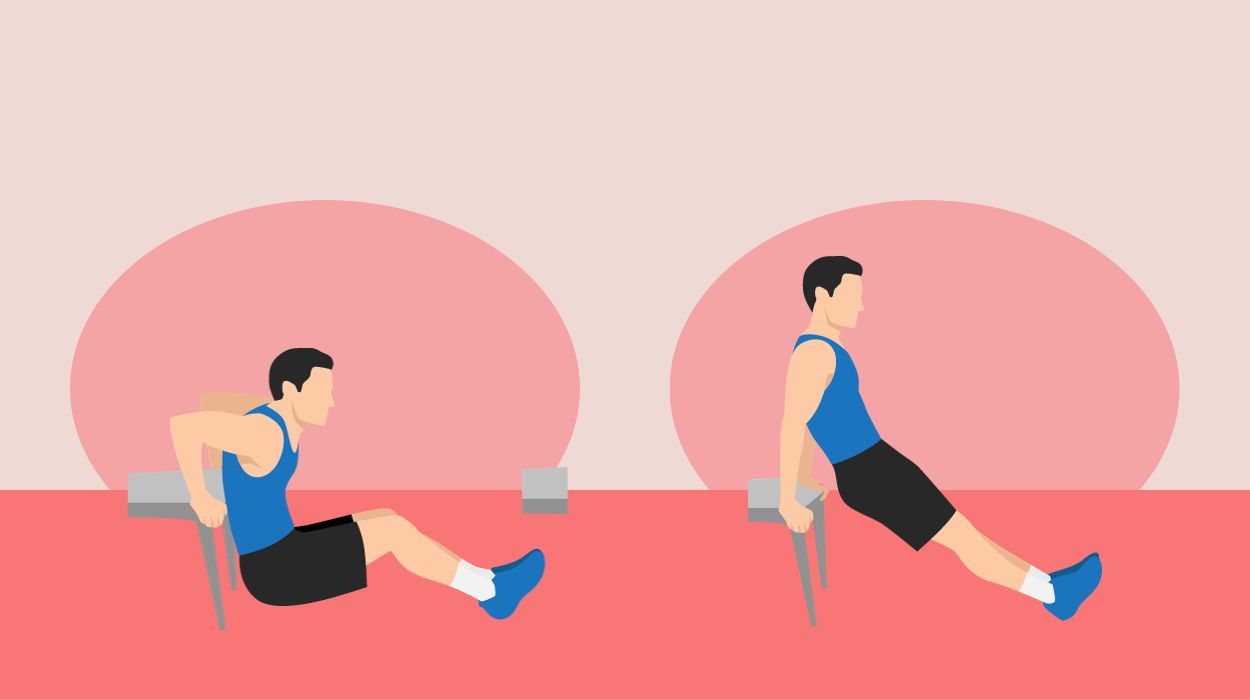
How to do:
- Sit at the edge of a sturdy chair or workout bench.
- Place your palms down on the chair or bench on either side of your hips. Your fingers should be pointed forward. Extend your legs in front of you, keeping them hip-width apart.
- Putting your weight on your arms, slide forward till your butt is off the chair, keeping your back close to the edge of the chair.
- Slowly lower yourself towards the floor until your elbows are bent almost at right angles.
- Slowly push yourself back to your starting position.
- Repeat for the desired number of repetitions.
Tips:
- Perform each dip slowly and with control, avoid using momentum, and engage your triceps throughout the motion.
- Ensure your hands are shoulder-width apart on a stable surface, and your elbows are pointed straight back as you dip down to reduce the risk of injury.
- Consider adding variations like bench or chair dips to your routine, targeting your triceps from different angles, and can help prevent muscle adaptation.
Optimal Sets and Reps: two sets of 12-15 reps.
Lateral Raises
Lateral raises primarily target the deltoid muscles of the shoulders and help create leaner arms and shoulders while minimizing muscle development.
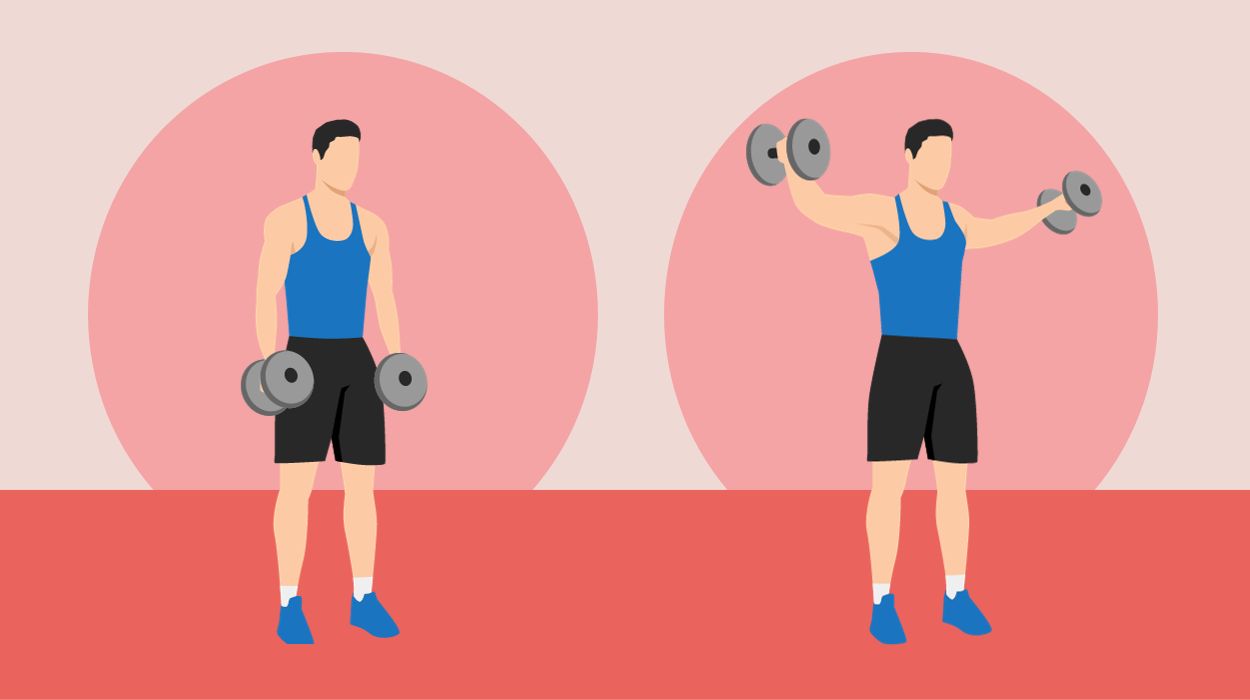
How to do:
- Hold a weight in each hand with your hands by your sides.
- Stand with your feet apart.
- Raise both arms until they are parallel to the ground, making a T shape. Be sure to keep your elbows slightly bent to avoid strain on your shoulder.
- Slowly lower them back to your sides.
Tips:
- Opt for light dumbbells to avoid bulking up, high repetitions with light weights are ideal.
- Keep a slight bend in your elbows, and raise your arms to shoulder level with a controlled motion to ensure you’re targeting your lateral deltoid muscles effectively.
- Focus on a slow and controlled lifting and lowering motion to minimize the risk of injury.
Optimal Sets and Reps: three sets of 15-20 reps.
Push-ups
Push-ups are an effective bodyweight exercise that targets the chest, shoulders, and triceps while engaging various other muscle groups. To avoid excessive muscle development in the arms before and after push-ups, perform push-ups with proper form.
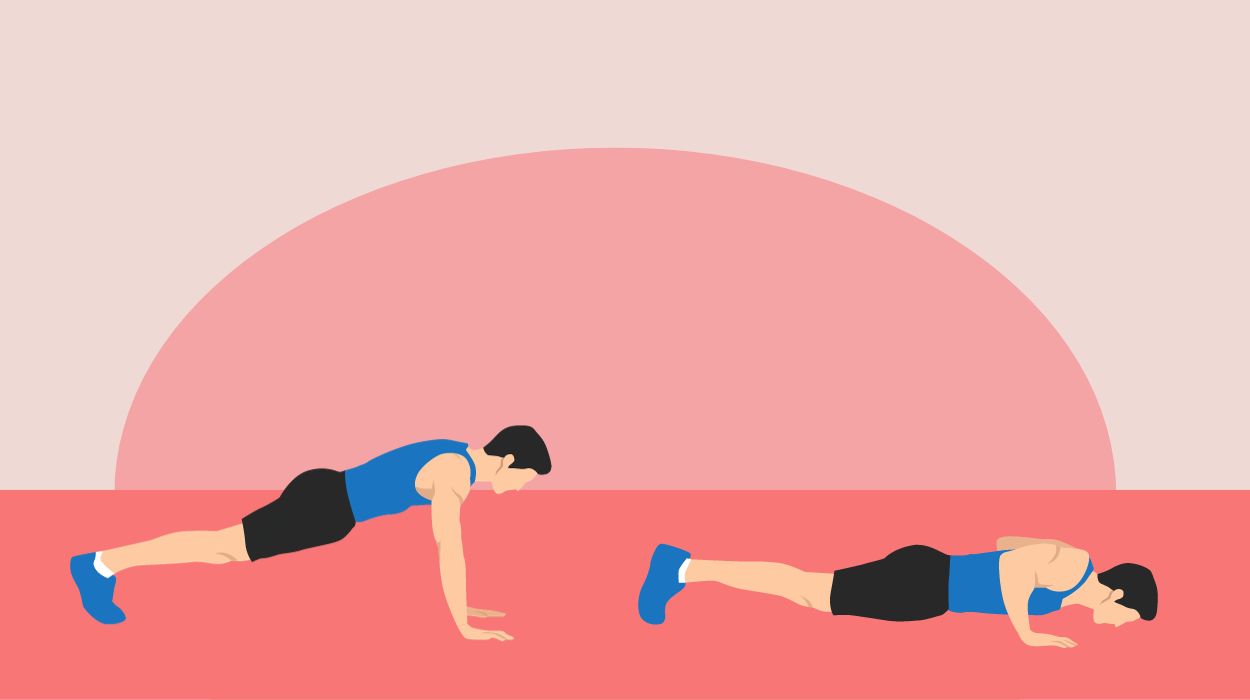
How to do:
- Get down on all fours and place your hands slightly wider than your shoulder-width.
- Extend your legs straight until you are on your toes in a plank position. Ensure your body is in a straight line from head to heels. No sagging in the middle.
- Engage your core by breathing through the exercise. On the exhale, your core will naturally engage, pulling your stomach tight.
- Slowly inhale as you lower your upper body until your elbows are bent at right angles.
- Then slowly exhale as you begin to push yourself upward to the starting position. Don’t lock your elbows, keep them slightly bent.
- Repeat for the desired number of repetitions.
Tips:
- Keep your body in a straight line from head to heels while doing push-ups to ensure you engage your muscles efficiently while targeting arm fat without excessive muscle gain.
- Perform push-ups slowly at a controlled, avoiding rapid movements and emphasizing the eccentric (lowering) phase.
- If standard push-ups are challenging, start with knee push-ups or against an elevated surface like a bench, and gradually progress to standard push-ups.
Optimal Sets and Reps: three sets of 12-15 reps.
Decline Push-ups
The decline push-up is a push-up variation and is a great arm workout. It is done with your feet on an elevated surface. You can use the edge of a bed, stair, couch, or any surface you’re comfortable with regarding the height
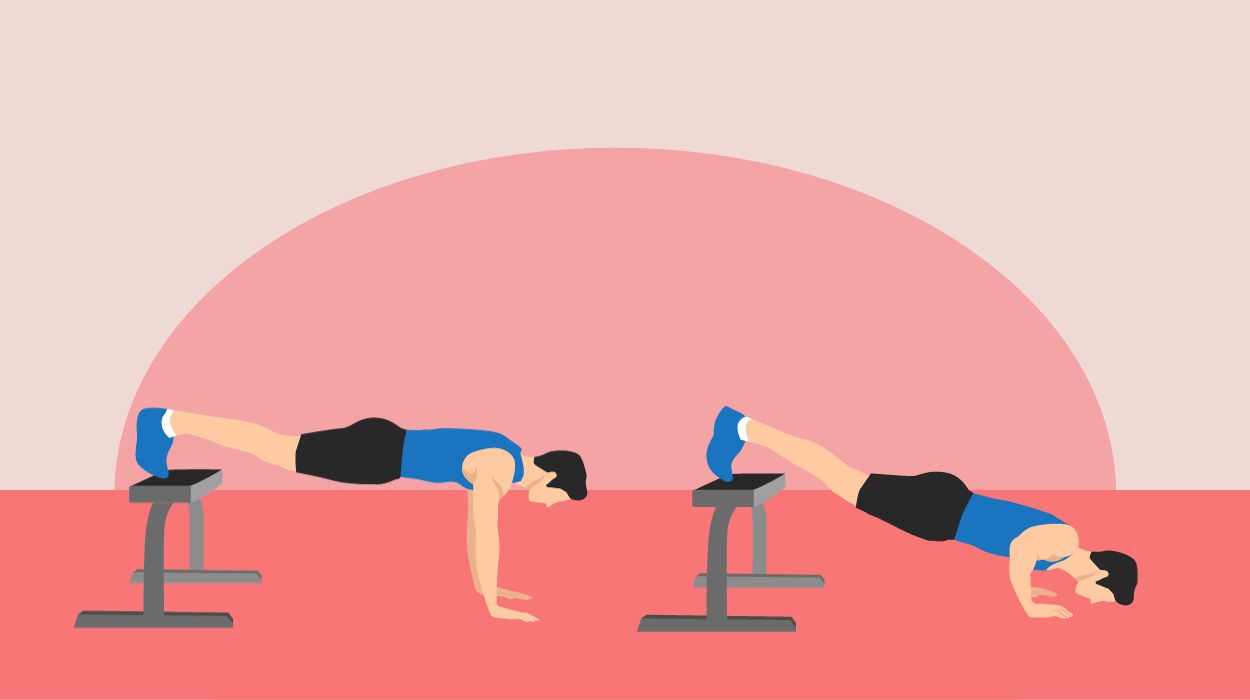
How to do:
- Place your hands shoulder-width apart on the floor and lift your feet to an elevated surface.
- Raise your shoulders directly over your wrists so you are in a plank position with your feet elevated.
- Bend your elbows and lower your upper body to the floor, keeping your back and neck straight. Be sure to engage your core, glutes, and thighs to maintain form.
- Extend your elbows and push your body upward to the starting position.
- Repeat for the desired number of repetitions, stop if you feel pain in your shoulders, elbows, and wrists.
Tips:
- Choose a moderate decline angle to strike a balance between challenge and control. Avoid overly steep declines to prevent unnecessary strain and potential muscle development.
- Ensure your body forms a straight line from head to heels, and keep your elbows close to your body.
- Perform decline push-ups with controlled, slow movements to emphasize muscle endurance over hypertrophy.
Optimal Sets and Reps: three sets of eight to 10 reps.
Planks
While primarily targeting the core muscles, planks also engage core strength, enhance posture, and increase calorie burn, contributing to a leaner and more sculpted appearance. By focusing on maintaining proper form and engaging your core, you can maximize fat loss while minimizing the risk of bulking up your arm muscles.
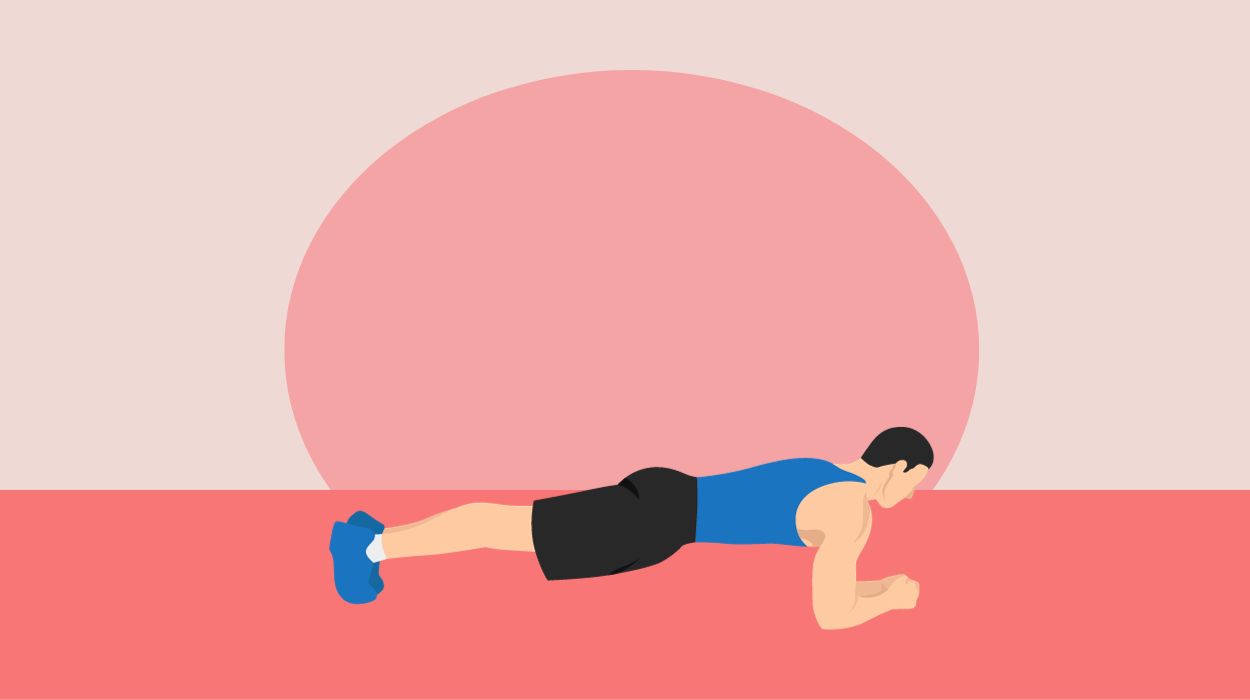
How to do:
- Assume a plank posture with your arms extended, hands under your shoulders, core engaged, and feet close together.
- Ensure your body is in a straight line from head to heels. No sagging in the middle.
- Relax your neck and look down.
- Try to hold the position for about 20-30 seconds. Remember to breathe while holding the plank.
Tips:
- Ensure your body forms a straight line from head to heels during planks to engage the core effectively and prevent strain on the arms and shoulders.
- Concentrate on tightening your core muscles while holding the plank position. This is essential for maximum benefit.
- Avoid excessive tension in your arms and shoulders by keeping them relaxed during planks.
Optimal Sets and Reps: three sets of 30-60 seconds per plank.
Inchworms
Inchworms are great arm workouts you can do without weights. Inchworms target your arms, shoulders, chest, and core and build strength.
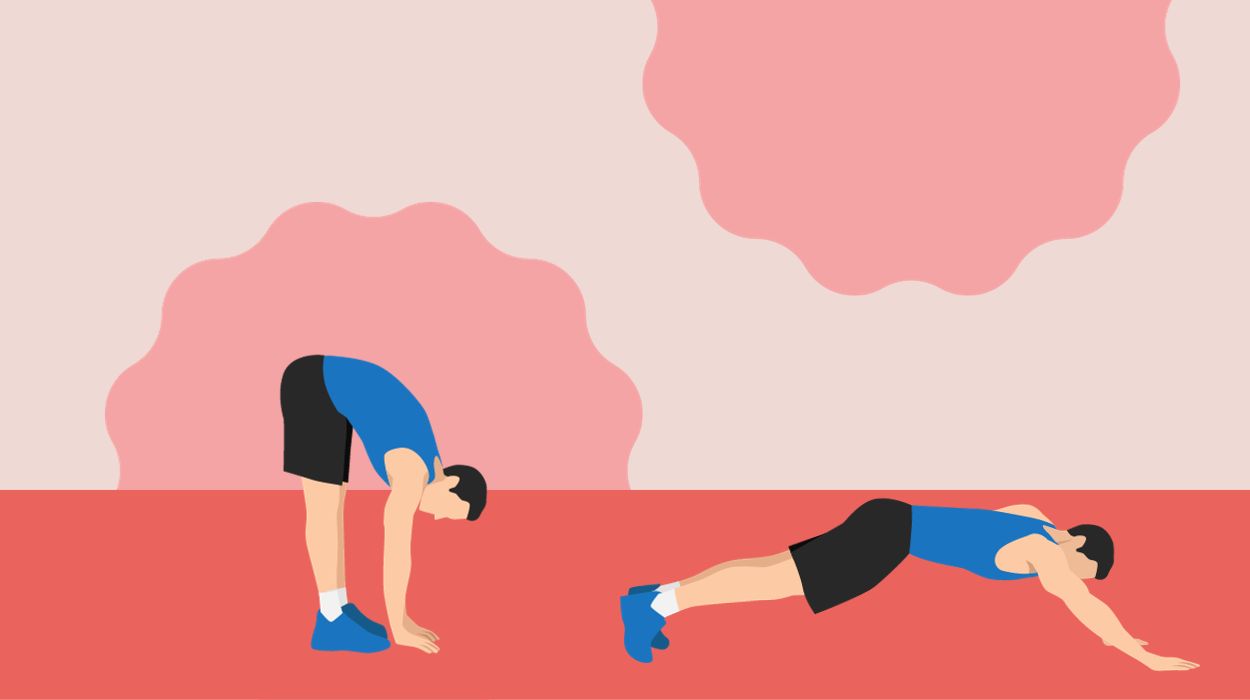
How to do:
- Stand straight with your feet hip-width apart and engage your core.
- Bend forward and place your palms on the mat or floor. You may bend your knees if necessary to place your palms flat on the mat or floor.
- Walk your hands forward to attain a high plank position. Your shoulders should be directly above your wrists.
- Then, walk your hand backward to your feet and stand up. This makes one rep.
- Repeat for the desired number of repetitions.
Tips:
- Keep your body in a straight line from head to heels throughout the movement.
- Engage your core muscles to maintain stability and maximize calorie burn, rather than relying solely on your arms.
- Perform inchworms with slow, deliberate movements to emphasize muscle endurance over hypertrophy.
Optimal Sets and Reps: three sets of 10-12 reps.
Additional Tips To Reduce Arm Fat Without Gaining Muscle
Resistance Training Exercises
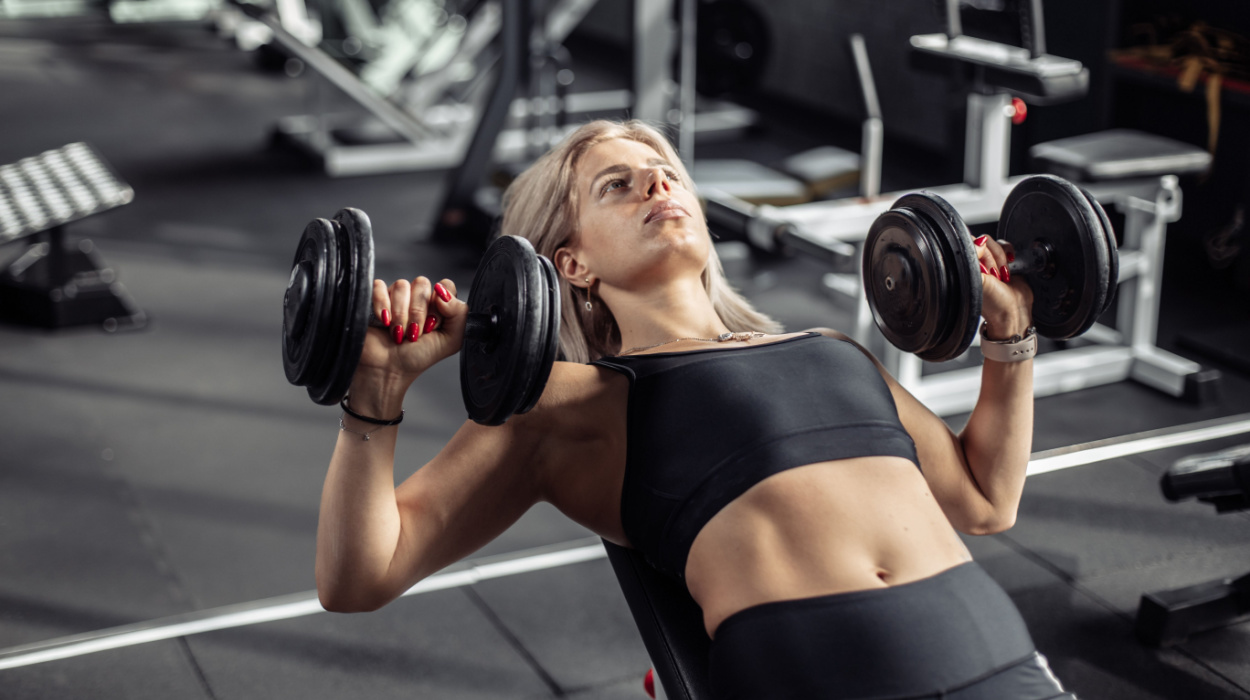
Resistance training exercises aid in fat loss by making your muscles work against a force or weight. This type of training can be completed with free weights, resistance bands, weight machines, and even your own body weight.[1]
Bodyweight exercises are among the best groups of resistance exercises for lean and toned arms. This is because you use your body weight as the resistance.[2] Instead of relying on free weights, resistance bands, and other gym equipment, utilizing only your body weight allows you to tone your muscles without getting big and bulky.
We recommend committing to two or three lightweight strength workouts per week to lose arm fat without gaining muscle. Some examples of lightweight full-body exercises include lunges, squats, chest presses, rows, curls, and raises.
Don’t forget to incorporate cardio, otherwise known as aerobic exercise, into your exercise routine. Aerobic exercise burns excess fat for energy,[3] helping you lose overall body fat, including arm fat. Jogging, running, cycling, swimming, jumping rope, and dancing are cardio exercises that help you get skinnier arms without building muscle.
Increase Protein And Fiber Intake
Diets with high protein and fiber content are beneficial for weight loss. According to current guidelines, healthy adults should aim to consume 1.2-1.5 grams of protein per kilogram of body weight[4] daily, respectively.
Adequate protein intake combined with exercise helps you burn more calories. Eating more protein and fiber also boosts feelings of fullness[5] and curbs sugar cravings. This helps to regulate your appetite, preventing overeating and frequent snacking. So, increasing your protein and fiber intake can help you lose weight and lose your bulky arms.
Ensure Adequate Sleep
Sleep deprivation[6] triggers the release of cortisol, the stress hormone that makes your body store fat. It also causes sugar cravings, making you consume more calories than necessary. Ensure you get seven to nine hours of sleep[7] to burn fat effectively.
Consider Supplements
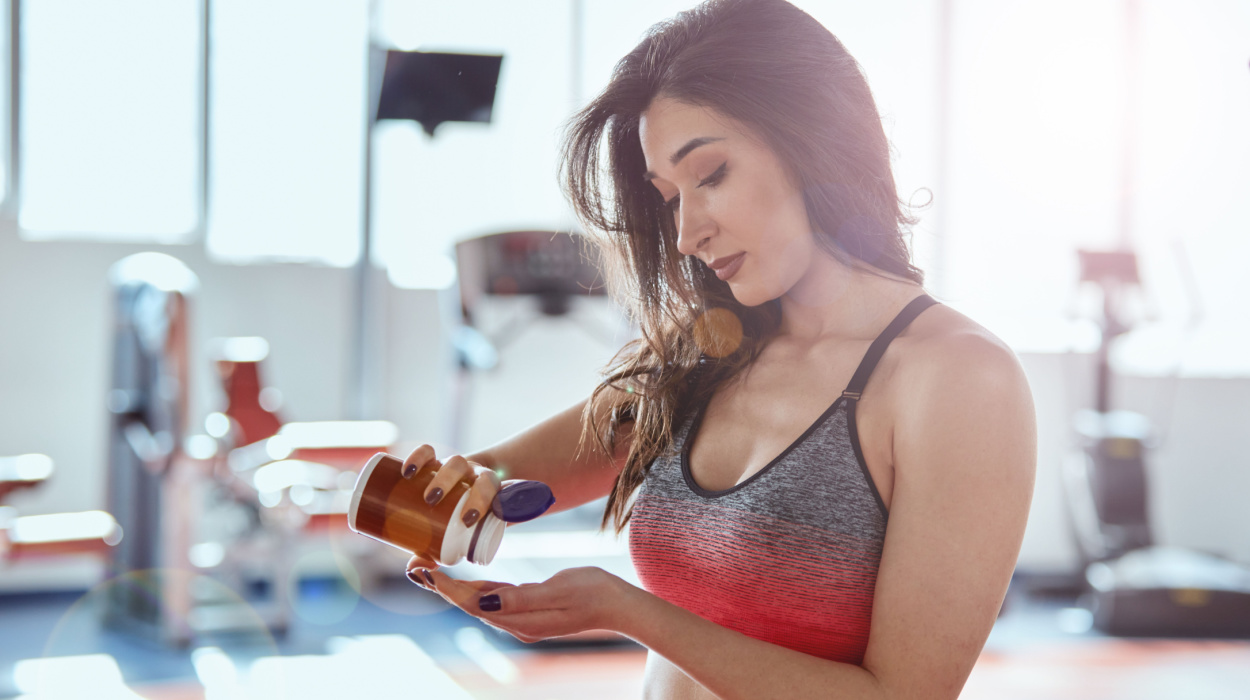
Supplements provide you with nutrients and have health benefits.
Protein powder and fruit and vegetable supplements can help increase your protein and fiber intake. They work to boost your metabolism, helping you burn more calories and ultimately lose weight. Consider these fat-burning supplements to aid in fat loss and better support your journey to lean muscle.
As always, it is important to speak with your healthcare provider before including supplements in your daily routine. Some supplements may interact with prescribed medications.
Arm Fat Causes
There are many causes of arm fat and its location.
First, genetics[8] and hormones[9] are strong determinants of where and how fat is stored in your body. Gender also plays a role in having arm fat. Women tend to have more fat mass[10] than men. This can contribute to fat accumulation in the arm.
In terms of lifestyle, high-carb diets increase blood sugar levels and stimulate increased insulin production.[11] Insulin promotes fat storage and contributes to the development of arm and underarm fat. Finally, medical conditions such as menopause and polycystic ovarian syndrome,[12] or PCOS, can also cause weight gain.
Conclusion
You can burn fat and tone your arms without gaining muscle mass. Losing arm fat requires general body weight loss. However, arm exercises can get you the lean, sculpted arms you’ve always desired.
Bodyweight exercises are the best forms of arm exercises to avoid bulky arms. Strength training exercises with lighter loads also help you get slim and strong arms.
To achieve quick and long-lasting results, you need to combine these exercise routines with a healthy diet and other healthy lifestyle habits such as adequate sleep and rest.
Frequently Asked Questions
Focus on bodyweight exercises that use your body weight as resistance. You can also do resistance exercises that require little weight.
Yes, cardio helps to establish a calorie deficit. It helps you burn more calories than you consume, so you can lose fat in your arms and other parts of your body.
The amount of cardio you need depends on your body type and how much weight you want to lose.
 Expert's opinion
Expert's opinion